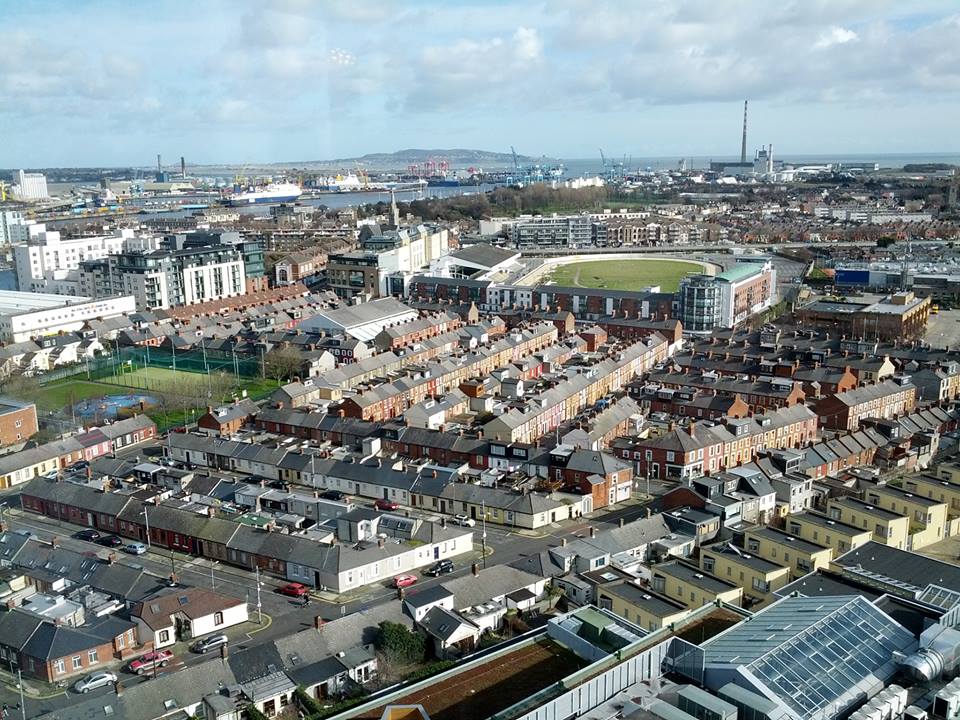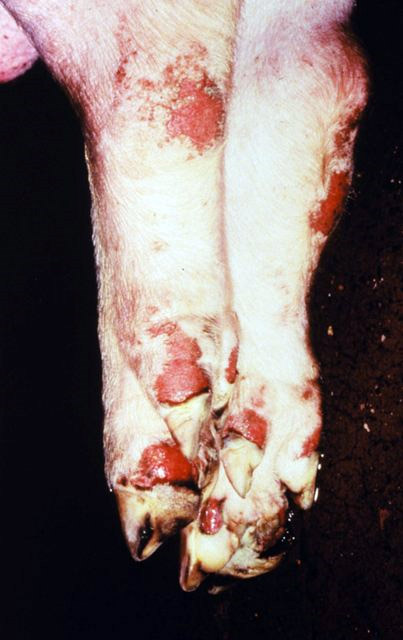|
1941 Irish Greyhound Derby
The 1941 Irish Greyhound Derby took place during September and October with the final being held at Shelbourne Park in Dublin on 4 October. Foot-and-mouth disease caused serious problems during 1941 with traveling almost ceased and Irish tracks coming to a standstill in many areas. The travel ban was finally lifted at the end of the summer and late plans were drawn up to at least save the Irish Derby before the year ended. This meant a much later final slot in October at Shelbourne Park because Cork had ruled themselves out from being able to stage the race. The winner Brave Damsel was owned by John Byrne who was known for owning the famous bitch Queen of the Suir before she left for the England. Final result At Shelbourne Park, 4 October (over 525 yards): Distances 1, ¾ (lengths) Competition Report Surly became a leading fancy after round two when beating Heatherset Hero by three lengths in 30.08. The other three second round heats went to Roeside Ilene, Well Protected ... [...More Info...] [...Related Items...] OR: [Wikipedia] [Google] [Baidu] |
Irish Greyhound Derby
The Irish Greyhound Derby held at Shelbourne Park, is the premier greyhound racing competition in Ireland. First held at Harold's Cross in 1928, the event was unofficial until 1932 and called the National Derby. The first winner in 1928 was Tipperary Hills who won in a time of 30.56 sec at a starting price of 1-1f. It controversially switched to Shelbourne Park in 1932 and then it was held in alternate years between the two tracks. The defunct Markets Field Greyhound Stadium in Limerick and the defunct Cork Greyhound Stadium in Western Road both hosted the event once in 1939 and 1942 respectively. The 1969 Irish Greyhound Derby was the last renewal held at Harold's Cross and the competition remained at Shelbourne Park from 1970. The most successful greyhound has been Spanish Battleship who won the event three times. Today it is considered to be one of the two biggest races in the calendar by the UK & Ireland greyhound racing industries, alongside the English Greyhound Derby ... [...More Info...] [...Related Items...] OR: [Wikipedia] [Google] [Baidu] |
Shelbourne Park
Shelbourne Park is a greyhound racing stadium in the south Dublin inner city suburb of Ringsend. Greyhound Racing Opening The plans to open a greyhound track in Dublin were drawn up by Paddy O’Donoghue, Jerry Collins, Patsy McAlinden and Jim Clarke. Shelbourne Park opened on 14 May 1927 hot on the heels of Celtic Park (Belfast). The stadium located in the docklands in Ringsend was Dublin's answer to the Belfast track and the pair became the two most greyhound prestigious tracks in Irish racing. When opening in 1927 the track employed four resident trainers in Mick Horan, Paddy Quigley, Billy Donoghue and Ben Scally. History One year later it was decided to introduce the Easter Cup which commemorated the 1916 Easter Monday Rising in Dublin. However, the race soon became known for its own fame rather than its naming origins. The first winner was a greyhound called Odd Blade and the brindle dog went on to successfully defend his title the following year. Famously Mick the Mill ... [...More Info...] [...Related Items...] OR: [Wikipedia] [Google] [Baidu] |
Dublin
Dublin (; , or ) is the capital and largest city of Republic of Ireland, Ireland. On a bay at the mouth of the River Liffey, it is in the Provinces of Ireland, province of Leinster, bordered on the south by the Dublin Mountains, a part of the Wicklow Mountains range. At the 2016 census of Ireland, 2016 census it had a population of 1,173,179, while the preliminary results of the 2022 census of Ireland, 2022 census recorded that County Dublin as a whole had a population of 1,450,701, and that the population of the Greater Dublin Area was over 2 million, or roughly 40% of the Republic of Ireland's total population. A settlement was established in the area by the Gaels during or before the 7th century, followed by the Vikings. As the Kings of Dublin, Kingdom of Dublin grew, it became Ireland's principal settlement by the 12th century Anglo-Norman invasion of Ireland. The city expanded rapidly from the 17th century and was briefly the second largest in the British Empire and sixt ... [...More Info...] [...Related Items...] OR: [Wikipedia] [Google] [Baidu] |
1940 Irish Greyhound Derby
The 1940 Irish Greyhound Derby took place during September and October with the final being held at Shelbourne Park in Dublin on 5 October. The winner Tanist won £225 and was owned by Arthur Probert of London and bred by Mr W.Twyford (real name Father Browne). Tanist a brindle dog whelped in March 1938 would become one of the fastest trackers in the sport and was one of the foundation sires of modern racing greyhounds. Final result At Shelbourne Park, 5 October (over 525 yards): Distances 6, neck (lengths) Competition Report Shelbourne track record holder Tanist returned to Ireland after an unsuccessful spell at Wimbledon Stadium and within a week of his return he set a new national record for 525yds. He was entered for the Derby and was the firm favourite. Forty of Ireland's leading greyhounds entered the event and the early rounds proved a test for Tanist who found trouble but scraped through to round two where he won in 30.21. Another Dancing Willie won both of his ... [...More Info...] [...Related Items...] OR: [Wikipedia] [Google] [Baidu] |
1942 Irish Greyhound Derby
The 1942 Irish Greyhound Derby took place during May with the final being held at Cork Greyhound Stadium in Cork on 30 May. The winner Uacterlainn Riac won £175 but despite the poor prize money the track experienced record crowds. John Crowley a local pub owner (Western Star in Cork) trained Uacterlainn Riac and Jerry Crowley from Ovens owned him. Uacterlainn Riac also won the McAlinden Cup the same year. Cork legend states that the pub was closed for days to huge celebratory crowd afterwards. Uacterlainn Riac (meaning Creamery Brindle) had an attempt at hurdling after the Derby but failed to take to them and plans for a Grand National double were scrapped. Final result At Cork, 30 May (over 525 yards): Distances 4, 2 (lengths) Competition Report In the final Uacterlainn Riac broke well from the traps to lead all the way. See also 1942 UK & Ireland Greyhound Racing Year The 1942 UK & Ireland Greyhound Racing Year was the 17th year of greyhound racing in the United ... [...More Info...] [...Related Items...] OR: [Wikipedia] [Google] [Baidu] |
Foot-and-mouth Disease
Foot-and-mouth disease (FMD) or hoof-and-mouth disease (HMD) is an infectious and sometimes fatal viral disease that affects cloven-hoofed animals, including domestic and wild bovids. The virus causes a high fever lasting two to six days, followed by blisters inside the mouth and near the hoof that may rupture and cause lameness. FMD has very severe implications for animal farming, since it is highly infectious and can be spread by infected animals comparatively easily through contact with contaminated farming equipment, vehicles, clothing, and feed, and by domestic and wild predators. Its containment demands considerable efforts in vaccination, strict monitoring, trade restrictions, quarantines, and the culling of both infected and healthy (uninfected) animals. Susceptible animals include cattle, water buffalo, sheep, goats, pigs, antelope, deer, and bison. It has also been known to infect hedgehogs and elephants; llamas and alpacas may develop mild symptoms, but are resistant ... [...More Info...] [...Related Items...] OR: [Wikipedia] [Google] [Baidu] |
1941 UK & Ireland Greyhound Racing Year
The 1941 UK & Ireland Greyhound Racing Year was the 16th year of greyhound racing in the United Kingdom and Ireland. Summary The year was dominated by the effects of World War II. The remaining classic races that had not been suspended in 1940 were duly suspended in 1941 with the exception of the Irish Greyhound Derby and Scottish Greyhound Derby. Racing did continue at many venues but was restricted to afternoons during the winter, this is because of the blackout regulations and during the summer the meetings were held in the early part of the evening. Matinee meetings would also take place on weekends at some tracks. Staffing the racing worsened as many of the stadium and kennel staff were called up to serve. Remarkably despite restrictions on racing then annual totalisator turnover set a new record, reaching £42,027,642 and with a tax of 6% was a significant income for the government. Competitions Trainer Joe Harmon continued his successful run of big race wins by training ... [...More Info...] [...Related Items...] OR: [Wikipedia] [Google] [Baidu] |
1941 In Irish Sport
Events Below, the events of World War II have the "WWII" prefix. January * January– August – 10,072 men, women and children with mental and physical disabilities are asphyxiated with carbon monoxide in a gas chamber, at Hadamar Euthanasia Centre in Germany, in the first phase of mass killings under the Action T4 program here. * January 1 – Thailand's Prime Minister Plaek Phibunsongkhram decrees January 1 as the official start of the Thai solar calendar new year (thus the previous year that began April 1 had only 9 months). * January 3 – A decree (''Normalschrifterlass'') promulgated in Germany by Martin Bormann, on behalf of Adolf Hitler, requires replacement of blackletter typefaces by Antiqua. * January 4 – The short subject '' Elmer's Pet Rabbit'' is released, marking the second appearance of Bugs Bunny, and also the first to have his name on a title card. * January 5 – WWII: Battle of Bardia in Libya: Australian and Britis ... [...More Info...] [...Related Items...] OR: [Wikipedia] [Google] [Baidu] |



